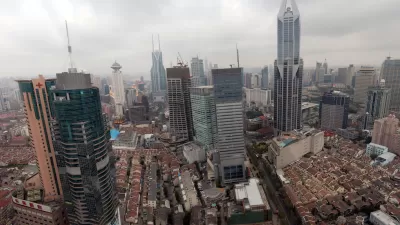The migrants that have swelled China's cities in recent decades still remain 'second-class citizens', unable to sell their rural land or have access to public services like schools or medical care. Will the country's new leaders change this?
"An unusually public debate has unfolded in think-tanks, on microblogs and in state media about how China should improve the way it handles urbanisation," reports The Economist. "Some propose that migrants in cities should, as quickly as possible, be given the same rights to services as urban dwellers. Others insist that would-be migrants should first be given the right to sell their rural plot of land to give them a deposit for their new urban life. Still others say the government must allow more private and foreign competition in state-controlled sectors of the economy such as health care, which would expand urban services for all, including migrants. Most agree the central government must bear much more of the cost of public services and give more power to local governments to levy taxes."
"Any combination of these options would be likely to raise the income of migrants, help them to integrate into city life and narrow the gap between the wealthy and the poor, which in China is among the widest in the world. Such reforms would also spur on a slowing economy by boosting domestic consumption."
As the authors explain, the “handshake buildings” (so named because they are separated from each other by only a few feet) that comprise "China’s favelas" and house the many migrants not living in factory dormitories, could become a solution for the country's urbanization ills by "[increasing] the supply of affordable housing and [helping] more migrants become proper urban residents."
FULL STORY: Some are more equal than others

Study: Maui’s Plan to Convert Vacation Rentals to Long-Term Housing Could Cause Nearly $1 Billion Economic Loss
The plan would reduce visitor accommodation by 25,% resulting in 1,900 jobs lost.

North Texas Transit Leaders Tout Benefits of TOD for Growing Region
At a summit focused on transit-oriented development, policymakers discussed how North Texas’ expanded light rail system can serve as a tool for economic growth.

Why Should We Subsidize Public Transportation?
Many public transit agencies face financial stress due to rising costs, declining fare revenue, and declining subsidies. Transit advocates must provide a strong business case for increasing public transit funding.

How to Make US Trains Faster
Changes to boarding platforms and a switch to electric trains could improve U.S. passenger rail service without the added cost of high-speed rail.

Columbia’s Revitalized ‘Loop’ Is a Hub for Local Entrepreneurs
A focus on small businesses is helping a commercial corridor in Columbia, Missouri thrive.

Invasive Insect Threatens Minnesota’s Ash Forests
The Emerald Ash Borer is a rapidly spreading invasive pest threatening Minnesota’s ash trees, and homeowners are encouraged to plant diverse replacement species, avoid moving ash firewood, and monitor for signs of infestation.
Urban Design for Planners 1: Software Tools
This six-course series explores essential urban design concepts using open source software and equips planners with the tools they need to participate fully in the urban design process.
Planning for Universal Design
Learn the tools for implementing Universal Design in planning regulations.
City of Santa Clarita
Ascent Environmental
Institute for Housing and Urban Development Studies (IHS)
City of Grandview
Harvard GSD Executive Education
Toledo-Lucas County Plan Commissions
Salt Lake City
NYU Wagner Graduate School of Public Service



























